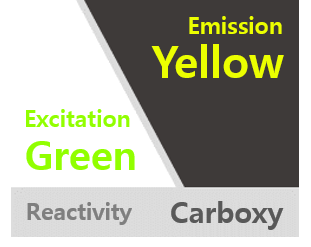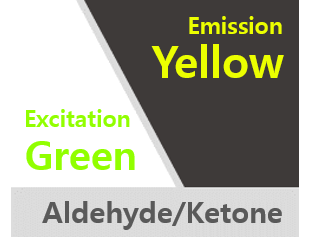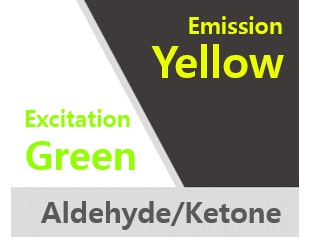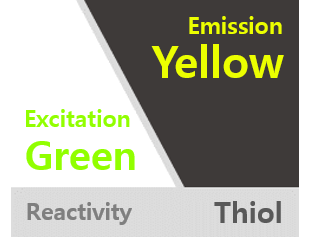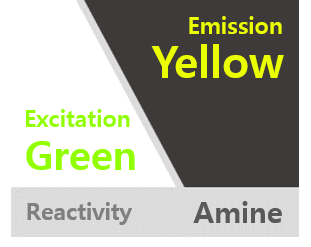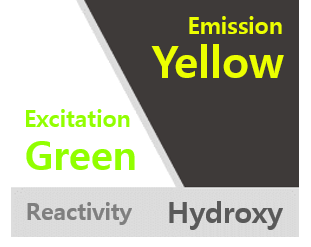
TAMRA Alkyne
| PACKING UNIT | price |
Lead time |
|---|---|---|
| 1 mg | $121.00 | |
| 5 mg | $287.00 | |
| 25 mg | $569.00 |
Description
TAMRA Alkyne is a copper (I)-catalyzed azide-alkyne cycloaddition (CuAAC) reagent of bright yellow dye that used to generate a stable fluorescence signal in bioimaging. The maxima of Ex/Em values are at 551/573 nm, similar to that of DyLight 549, ATTO 550 and Cy 3. TAMRA might be excited using 543 or 546 nm laser line and displays good optical property. TAMRA alkyne couples with an azide to form 1,4-disubstituted 1,2,3-triazole inside of living systems without interfering native biochemical processes. Prior to perform CuAAC, the azide functionality should be introduced onto counterpart biomolecule by means of chemical or genetic modification. We offer TAMRA alkyne as a CuAAC reagent dye for cellular imaging and nucleotide functionalization.
Citation & Reference
1. Hong H, Highly efficient site-specific protein modification using tyrosinase from streptomyces avermitilis: Structural insight. International Journal of Biological Macromolecules. 2024 Jan;255:128313.
2. Wu C, Investigation into the mechanism of action of the antimicrobial peptide epilancin 15x. Frontiers in Microbiology. 2023 Nov 2;14.
3. Troy A. Walton. Evaluation of New Linkers and Synthetic Methods for Internal Modified Oligonucleotides. Bioconjugate Chem 13.5 (2002): 1155-1158.
4. Matthew H. Lyttle. A Tetramethyl Rhodamine (Tamra) Phosphoramidite Facilitates Solid-Phase-Supported Synthesis of 5‘-Tamra DNA. J. Org. Chem 65.26 (2000): 9033-9038.
OPTION
Total

 log
log My
My Contact
Contact


